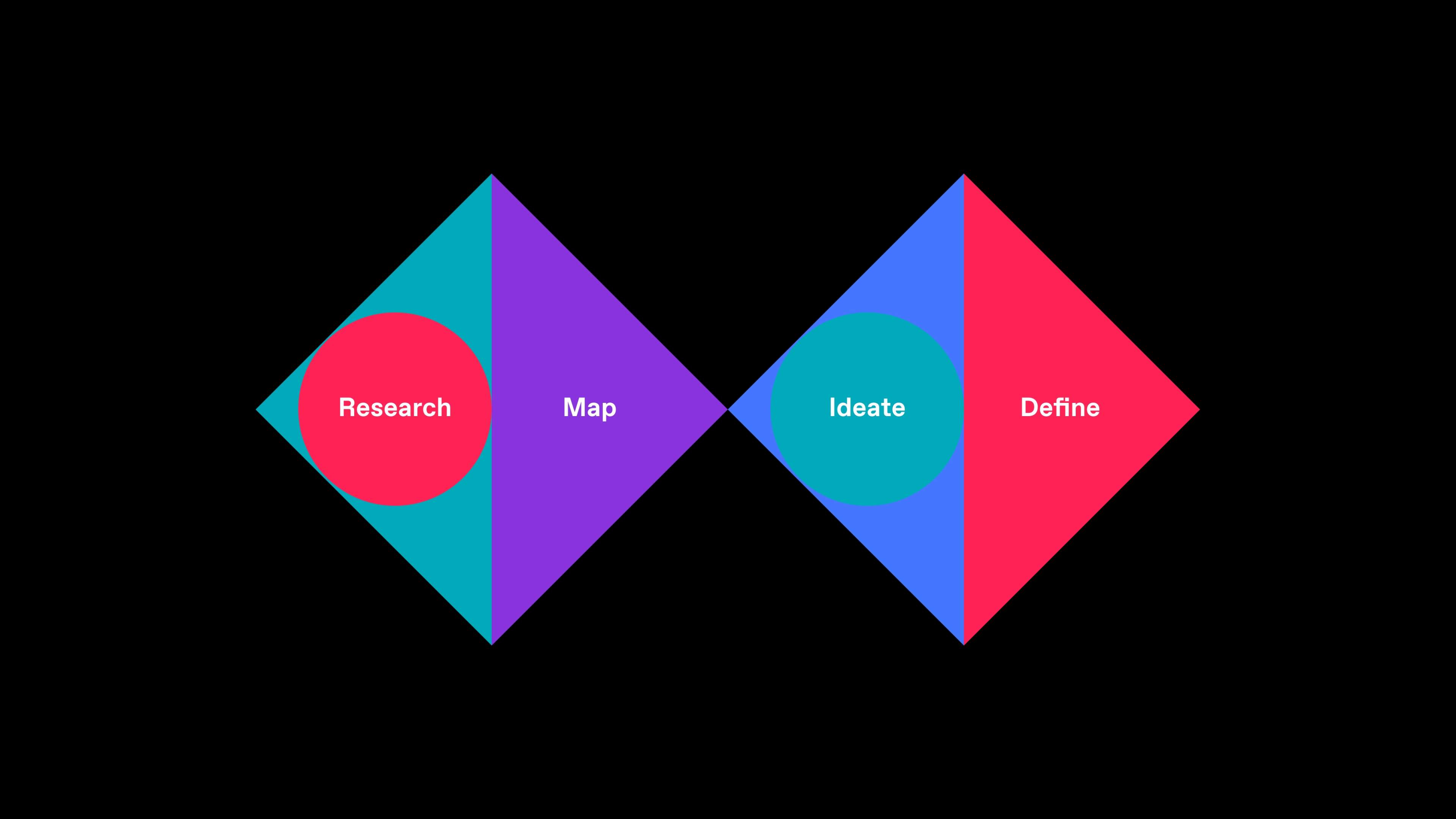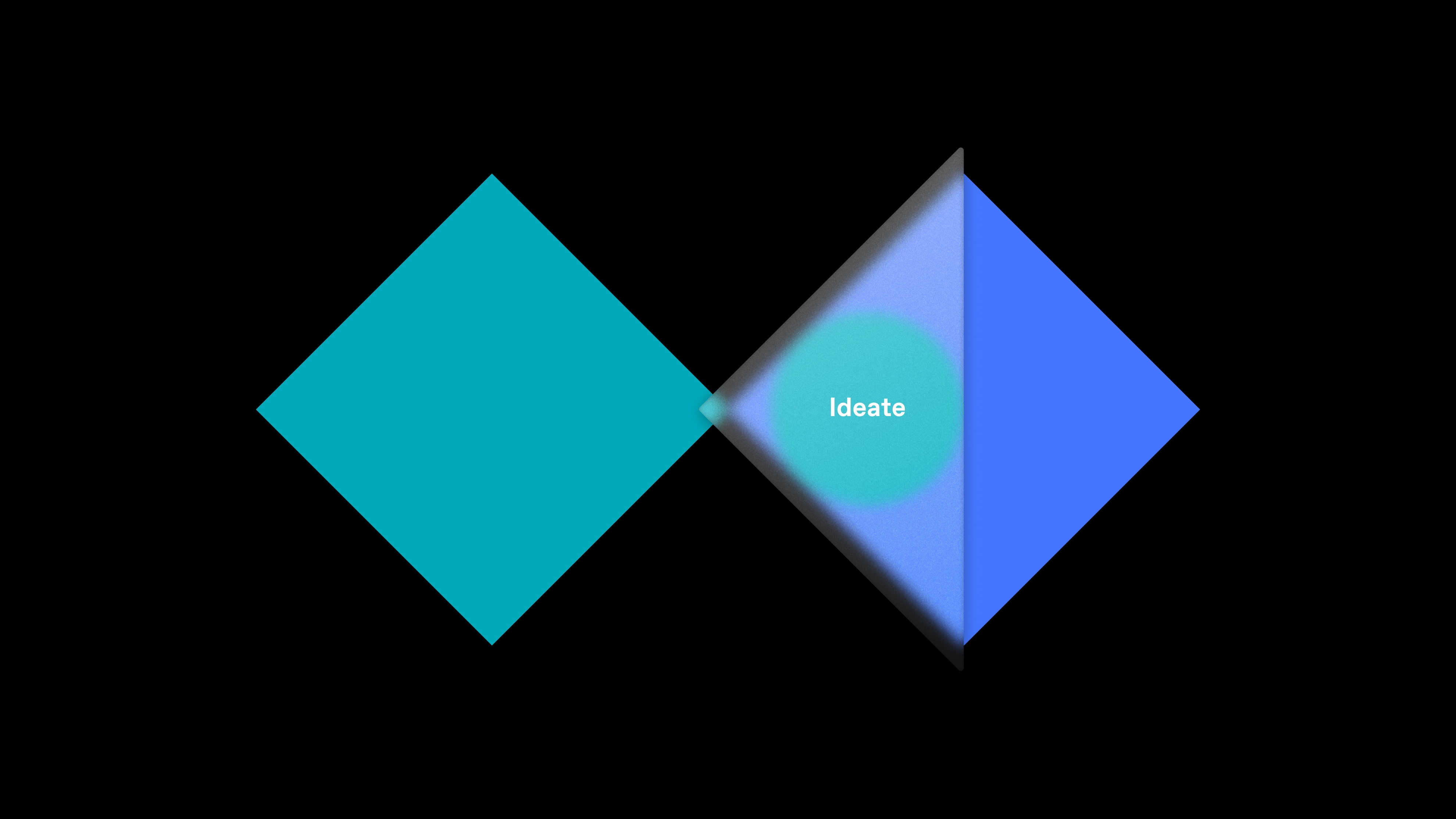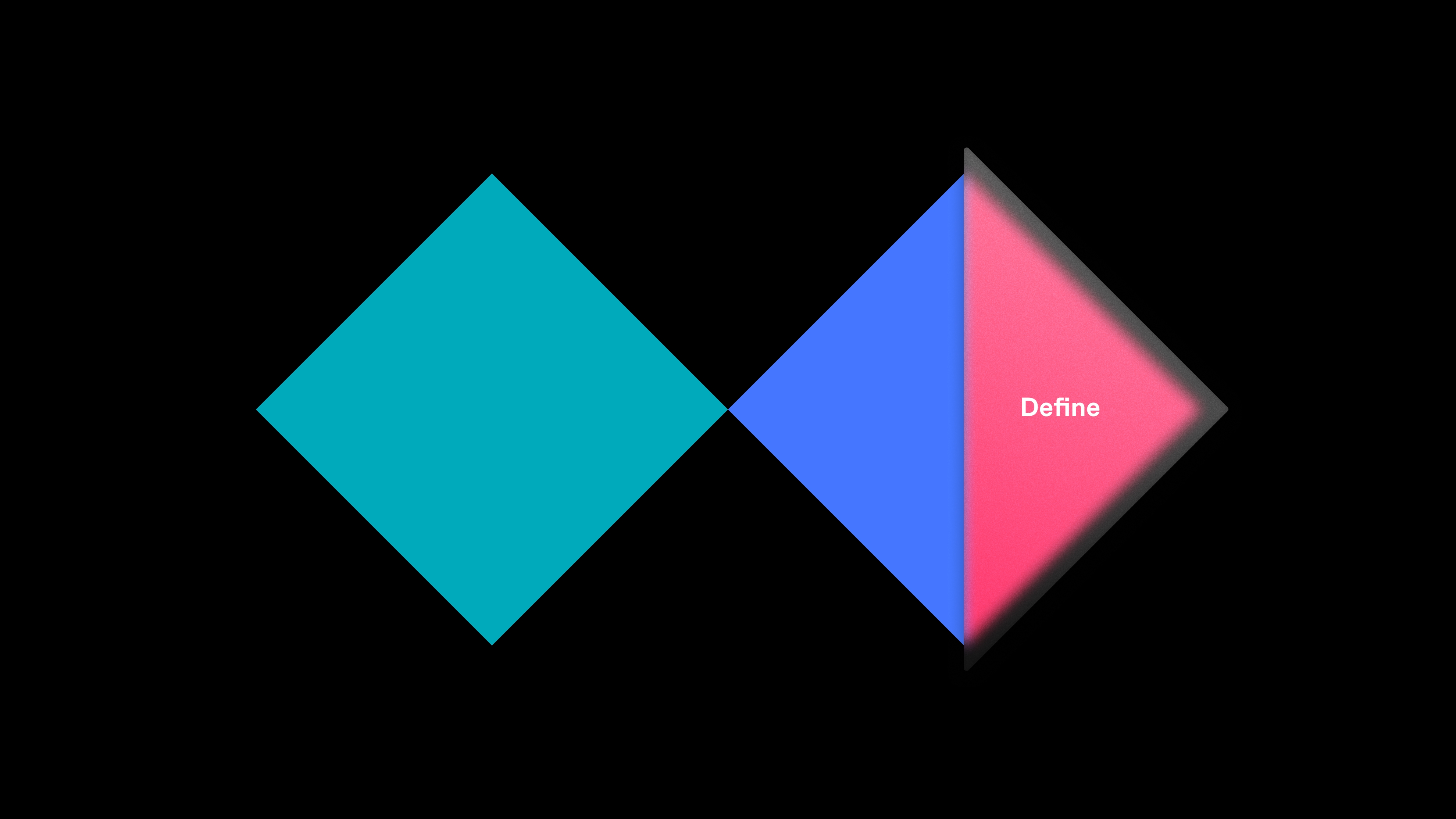To build the right thing, use design thinking and diamonds

Too often, innovators try to build the right thing using this process:
Have an idea → Build it → See if people like it
That’s all great for romanticizing lightning bolts of inspiration, but if you don’t test whether you’re building the right thing until the product exists, it’s kind of too late to get all that time and money back.
While innumerable designers and firms try to build the next revolutionary solution, you can get a leg up by asking a simple question: Is this the right thing to build for the people who will be using it?
This shouldn’t be a question limited to company leaders either. Everyone involved in the building of a new product should be asking at every step of the process whether it makes sense to move forward.
To build the right thing, step away from the solutions
Design thinking allows you to step back from the idea and survey if the problem is real, and if you fully understand it. When you run right to a solution, it’s hard to know whether you really understand users’ needs.
A problem statement helps to fill out the landscape of the project: what need you are addressing and how? To get there, you have to center your users and challenge your assumptions at every stage.
When you assume you have the right idea, your assumptions might not hold up to scrutiny. If you attack your ideas with as many counter-arguments as possible, you’ll prove its value. The double diamond method helps you to facilitate this way of working.
The double-diamond approach to design thinking
The double diamond model introduces a new way to handle the design process.
It’s four steps are:
These four steps are laid out along two diamonds. The diamond shape represents another element of this process: divergent and convergent thinking. These concepts ask you to broaden the scope and accumulate as many ideas as your team can conceive (divergent). Then, you can weed through the ideas to find the one best suited for your desired outcome (convergent).
By always focusing on both divergent and convergent thinking throughout the process, we get the advantage of assessing a wide range of ideas. The double diamond approach helps refine toward a solution based on research, not assumptions. The right solution will best fit users’ needs.
If your team were to stop at the first idea, you might end up building a product that users don’t need or creating a slightly better version of something that already exists. To build something valuable for your users, you have to think beyond the obvious.
Now let’s see an overview of how these steps work…

Research: Find out all the possibilities in how the user thinks
Once you have an idea, you need to understand the problem from the perspective of the intended users. Talking to the users — in an open-ended way like a user research sprint — before building will help you understand the problems your audiences face. User interviews can give your team rich insights into why people behave the way they do.
It’s also an effective way to deepen empathy for the users you want to reach. Every user faces unique challenges. When you learn what they need first hand, you can take a more human-centered approach to your product design.
Research lives on a divergent axis in the double diamond model. Throughout the user research process, it’s paramount to keep any question or activity open-ended. This makes true discovery the focal point of the valuable time you have with the users you are trying to build for.
By the end of the research phase your team should have a large amount of insights about your users’ experience. These will be the building blocks for the rest of the project. Hopefully they will be very different from the kinds of things you thought might be a solution before you started this exercise.
Building the right thing means making a profit
User desirability isn’t the only thing you have to test. To make a successful product, it also has to be technically feasible and viable for the business. You need to bring people into the process who can speak to all three of these elements, or you’ll end up making promises to users that you can’t keep.
Consider who can advocate for each of these sides. At Table XI, we often pair our designers with developers and business leads from our partners’ organizations early in the process. That way we know the product will work on all three fronts, as well as for the end users.
If user desirability were the only thing we needed to answer for, our next company would build free ice cream cone delivery drones. To justify building the right thing for your audience, it also has to make sense for the business and work with available technology. Without experts on how your business makes things and how your business sells the things you make, you’ll likely end up in production limbo or in the red on an unprofitable product.
Design thinking is building the right thing
If you follow the double diamond process honestly, you’ll find your way toward building the right thing. The process forces you to question your initial ideas, find the true problem users face, develop the best solution for users and for your business, then test it.
At Table XI, our motto is Tech Done Right — that means building the thing right and building the right thing. The double diamond process ensures we’re working off of a solid foundation before we start, so we’re accountable to our partners and their end users from the beginning.
If you want to learn more about design thinking, listen to our CEO on this podcast or reach out to us directly to find out when our next workshop is.

Map: Draw the path toward a solution
Once you have the insights from your users, you can start to layout the path toward defining the specific problem they need to be solved. This allows you to take all the divergent ideas and converge onto a single problem statement to solve for.
To get there, there are three main techniques we use for understanding the qualitative research we’ve collected and turning it into a direction: empathy maps and identifying goals and pain points. You can see a full explanation of these processes here.
Now that you’ve mapped the journey, create a problem statement that gives your path a destination. To do so, take a look at the user needs your team has identified and choose one that feels the most universal. Start the problem statement with “How might we…” and fill in the specific user problem at hand.
This section should leave your team with a clear problem statement directly from the users. It should be the idea you work from going forward — all ideas point to solving this specific problem.

Ideate: Collect every possibility, from everyone
Now that you have the problem statement, it’s time to diverge again. Instead of jumping to the first solution you think of, the next step is to imagine as many possible solutions as you can. Hopefully in the sea of ideas there will be a solution that caters to the needs of the users.
Here, it’s important to have an integrated team with people from different disciplines and backgrounds. A carpenter is going to try to solve a problem with wood, but a bricklayer may be the key to a truly innovative solution. Just as you would talk to all the types of possible users in the first divergent stage, you want to collect solutions from all types of people in the second divergent stage. With an integrated team, you can maximize the diversity of perspectives to generate the best possible outcome.
You should walk away from this stage with several ideas you’re excited about (and plenty more that may be exciting, if not good). If it feels a little overwhelming, and like you can’t possibly choose, that’s a good thing.

Define: Get an idea of what the solution will look like
The final step is to develop a strategy and build a prototype of the solution. This is when we converge again, sorting through our many solutions for the one that best meets the needs outlined in the problem statement.
Again, we break out into small groups to create multiple visions via storyboards for how the product will work within people’s lives. These storyboards will help see us through to building a prototype. With the prototype, we’re able to turn back to users and test again, making sure that the thing we built is in fact working in the right way.
You should end this phase with a vote on which product and path sketched will be what you test with your user group. Keep all of your storyboards though. If you users feel your solution is off the mark, you can iterate this step to refine your solution.
Building the right thing means making a profit.
User desirability isn’t the only thing you have to test. To make a successful product, it also has to be technically feasible and viable for the business. You need to bring people into the process who can speak to all three of these elements, or you’ll end up making promises to users that you can’t keep.
Consider who can advocate for each of these sides. At TXI, we often pair our designers with developers and business leads from our partners’ organizations early in the process. That way we know the product will work on all three fronts, as well as for the end users.
If user desirability were the only thing we needed to answer for, our next company would build free ice cream cone delivery drones. To justify building the right thing for your audience, it also has to make sense for the business and work with available technology. Without experts on how your business makes things and how your business sells the things you make, you’ll likely end up in production limbo or in the red on an unprofitable product.
Design thinking is building the right thing
If you follow the double diamond process honestly, you’ll find your way toward building the right thing. The process forces you to question your initial ideas, find the true problem users face, develop the best solution for users and for your business, then test it.
At TXI, the double diamond process ensures we’re working off of a solid foundation before we start, so we’re accountable to our partners and their end users from the beginning.
If you want to learn more about design thinking, listen to our CEO on this podcast or reach out to us directly to find out when our next workshop is.
How design thinking helped AccuWeather better serve its audience.
Published by Product Design

Let's shape your insights into experience-led data products together.